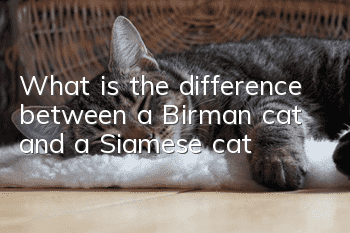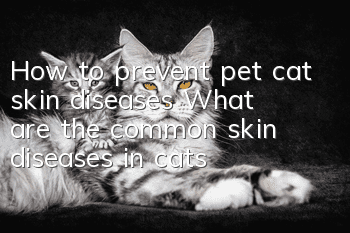The most complete collection of basic knowledge about raising cats in 2016

The average lifespan of a cat is 12 years, and the longest-lived cat recorded in the literature lived to be 30 years old;
Cats reach sexual maturity at an average of 7-8 months, with a sexual cycle of 15-28 days;
The most suitable breeding age for cats is 10-18 months old, with a gestation period of 60 to 68 days and a lactation period of about 60 days;
The normal body temperature of cats is 39°C, with a general range of 38-39.5°C (rectal temperature);
Heart rate: 130 to 140 beats/min for young cats and 100 to 120 beats/min for adult cats;
Respiration rate 20-30 times/min;
Total blood volume accounts for 6.2% of body weight, red blood cells 8 million/cubic millimeter (normal range is 6.5 million to 9.5 million/cubic millimeter), white blood cells 16,000/cubic millimeter
-------------------------------------------------- ----------------------------------
Cat’s coat system characteristics
The most eye-catching thing about a cat is its beautiful coat. The coat and skin not only constitute a cat’s beautiful appearance, but also have very important physiological functions.
The skin and coat are a strong barrier for cats. They can prevent the loss of water in the body, resist certain mechanical damage, and protect the body from harmful physical and chemical damage. The skin and coat have good thermal insulation properties in cold winter, giving cats a strong ability to keep out the cold. In summer, the coat acts as a large radiator, reducing body temperature.
There are many receptors in the cat's skin that can sense changes in the internal and external environment. Receptors can sense one or several types of stimuli, such as cold, heat, touch, pressure, pain, etc.
Cat hair grows from the hair follicles in the skin, and the hair follicles are elongated and bag-shaped. There are two types of cat hair follicles, one is an isolated hair follicle with only one hair, and the other is a compound hair follicle with multiple hairs. Cat hair follicles are mainly compound hair follicles. Therefore, the cat's coat is very dense, about 200 hairs per square millimeter. The coat can be divided into two types: guard hair and down. Cats also have sebaceous glands and sweat glands in their skin. The secretion of sebaceous glands is oily and can make the coat shiny and smooth. Cat sweat glands are underdeveloped, so they cannot participate in body temperature regulation like human sweat glands. Cats lose heat through skin radiation or breathing.
-------------------------------------------------- ----------------------------------
Characteristics of the cat’s respiratory system
Cat’s respiratory systemIncluding the nasal cavity, larynx, trachea, bronchi and lungs. The nasal cavity is divided into two parts by the middle septum. The inner surface is covered with mucosa. The posterior part of the nose is covered by the olfactory mucosa that distributes the olfactory nerve. It is the olfactory part of the cat.
The larynx is composed of thyroid cartilage, cricoid cartilage and epiglottis cartilage, and its skeleton is also the vocal organ. The laryngeal cavity is divided into three parts. The upper part is the vestibule of the larynx, and its trailing edge is the false vocal cords, which can make a "gurgling" sound when vibrating. The cavity between the false and true vocal cords is the second part of the larynx. The third part is the cavity between the vocal cords and the cartilage ring, which is very narrow.
The trachea and bronchi are the passages of the respiratory tract. The tracheal wall is supported by a cartilage ring, and the inner surface is lined with ciliated epithelial mucosa. A cat's lungs are divided into two lobes, and the right lung is larger than the left lung. The weight of the lungs is about 19 grams. After the alveoli are expanded, the total area can reach 7.2 square meters. Healthy cats practice thoracic breathing, that is, the chest and abdomen rise and fall at the same time when breathing, and the number of breaths per minute is 15 to 32 times. When the ambient temperature increases or after activity, the breathing rate may increase physiologically.
-------------------------------------------------- ----------------------------------
- Symptoms of mental depression in cats and the resulting diseases
- Do hairless cats need to supplement taurine? What are the benefits?
- Why does a cat urinate frequently and have low urine output? You must pay attention to it!
- How to correct a kitten that only eats meat and not cat food
- Why does the cat vomit green water?
- Are there any Siamese cats with folded ears? What kind of Siamese cat does your family have?
- What is cat transmission? How to prevent abdominal transmission in cats?
- What to do if your cat has indigestion?
- What should I do if the big cat has engorged milk but the kitten can’t eat it?
- What do cats’ behaviors mean?



